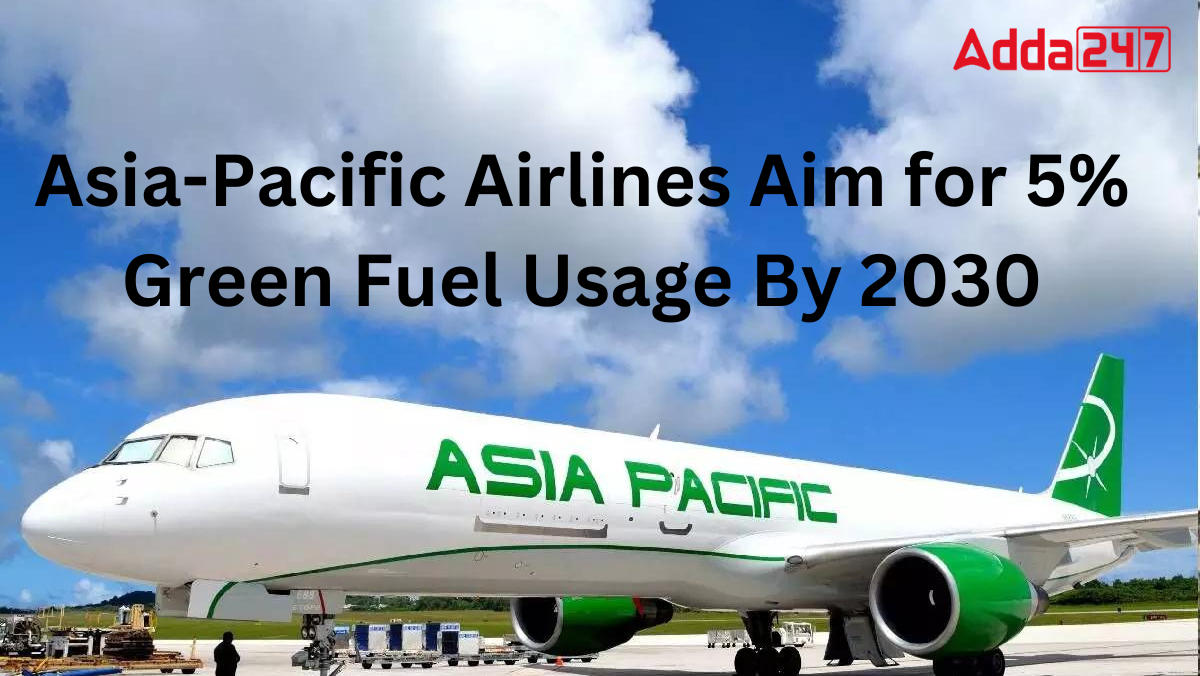Introduction
The Association of Asia-Pacific Airlines (AAPA) has announced a groundbreaking target for its 14 member airlines, including newly inducted Air India, to achieved 5% sustainable aviation fuel (SAF) usage by 2030. This move aims to address the aviation industry’s carbon emissions challenges, signaling a significant demand for sustainable fuel production.
Challenges and Significance
Despite the commendable goal, the aviation industry faces challenges such as limited SAF availability and cost implications. The AAPA emphasizes the need for a comprehensive approach, stressing that the industry is “feedstock and pathway agnostic.” This means that sustainable feedstock for aviation fuel is available globally in the form of waste, agricultural and forestry residues. However, the transition requires support from oil majors, as well as governmental subsidies and incentives.
Global Mandates and Supply Concerns
While some regions, like the European Union (EU), have implemented mandates for sustainable aviation fuel usage, the AAPA highlights the importance of ensuring an adequate supply before enforcing such mandates without a stable supply of SAF may not be effective. Airlines are eager to embrace sustainable solutions, but the current supply is insufficient to meet the demand.
National Initiatives in India
India has also taken steps toward promoting sustainable aviation fuel. In May, the Ministry of Petroleum and Natural Gas in India expressed its intention to mandate 1% SAF use by domestic carriers by 2025. The civil aviation ministry has further outlined plans to increase the blending of sustainable aviation fuel to 2% by 2026 and 5% by 2030. However, these mandates may face challenges if the supply side is not adequately addressed.
Industry Perspective on Price Differential
Member airlines, including Cathay Pacific, stress the need for a policy framework that minimizes the prize differential between traditional jet fuel and sustainable aviation fuel. Achieving a level playing field is crucial for airlines committed to sustainability, as the cost of green fuel remains higher fossil jet fuel. Airlines, such as Cathay Pacific, have set ambitious targets, with a commitment to 10% SAF usage by 2030.
Progress in India and Global Impact
India has witnessed SAF demonstration flights, including one by Spice Jet in 2018 and Air Asia India in May 2023, marking the country’s first domestic commercial passenger flight with SAF blending up to 1%. These initiatives contribute to the global efforts to address aviation’s environmental impact, as the sector currently contributes 3% of global carbon emissions.
Global Targets and Progress
In 2016, the International Civil Aviation Organization set a carbon-neutral growth target starting from 2019 and aims for net-zero emissions by 2050. Despite progress, SAF production, which reached approximately 300 million liters in 2022, represents only 0.1% of total aviation fuel use, according to the International Air Transport Association. The industry faces the challenge of scaling up production to meet ambitious targets.



 Important Days in July 2024, Check Natio...
Important Days in July 2024, Check Natio...
 Jagannath Puri Rath Puri 2024: Date, His...
Jagannath Puri Rath Puri 2024: Date, His...
 Important Days in June 2024, List of Nat...
Important Days in June 2024, List of Nat...
